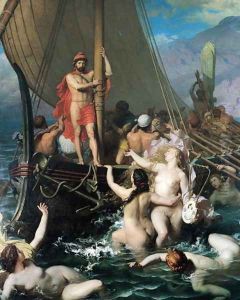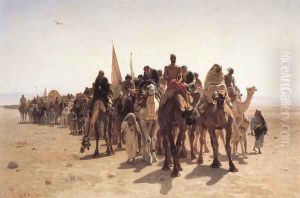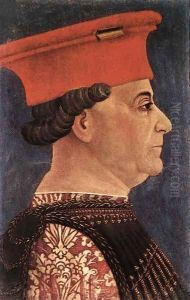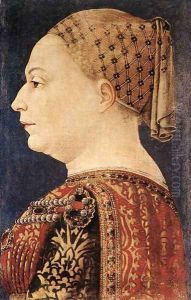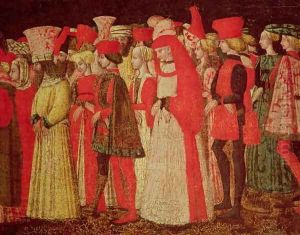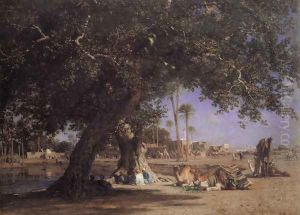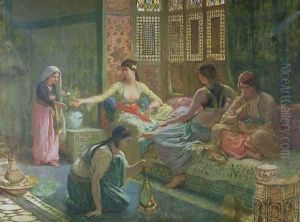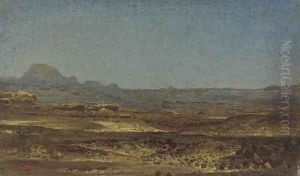Leon-Auguste-Adolphe Belly Paintings
Leon-Auguste-Adolphe Belly, commonly known as Léon Belly, was a notable French landscape painter, associated with the Barbizon school—an art movement named after the village of Barbizon near Fontainebleau Forest in France, which focused on realism in art and featured artists who moved away from classical subjects to paint landscapes and scenes of rural life. His work is characterized by a fascination with the East and Orientalism, which was a popular theme among European artists in the 19th century.
Belly was born on April 18, 1827, in Saint-Omer, France. His artistic training is not well-documented, but it is known that he was a pupil of the French history painter François-Édouard Picot. Belly's early works were typically historical or biblical scenes, but his focus shifted after he traveled to the Middle East in 1850. This journey had a profound impact on his artistic direction, leading him to produce works with Orientalist themes that would define his career.
During his travels in Egypt, Belly was inspired by the country's vast landscapes, the Nile River, and the daily life of its inhabitants. In 1857, he presented his monumental work 'Pilgrims going to Mecca' at the Salon, which earned him critical acclaim and a first-class medal. This painting, which measures over five meters in width, portrays a caravan of Muslim pilgrims on the annual Hajj, showcasing Belly's ability to capture the grandeur and vastness of the desert landscape, as well as the intricacies of the human figures within it.
Belly continued to exhibit regularly at the Salon, and his Orientalist works were well received by the public and critics alike. His paintings were appreciated for their attention to detail, the richness of their palette, and their atmospheric depiction of light. While Belly embraced the realism that characterized the Barbizon school, he infused his landscapes with a romantic sense of exoticism that was sought after by European audiences of the time.
Leon Belly's health began to deteriorate in the early 1870s, and he died on September 24, 1877, in Paris. Although not as widely known today as some of his contemporaries, Belly's contributions to Orientalist painting and 19th-century French art remain significant. His works are held in several museums and collections, including the Louvre in Paris and the Metropolitan Museum of Art in New York.
